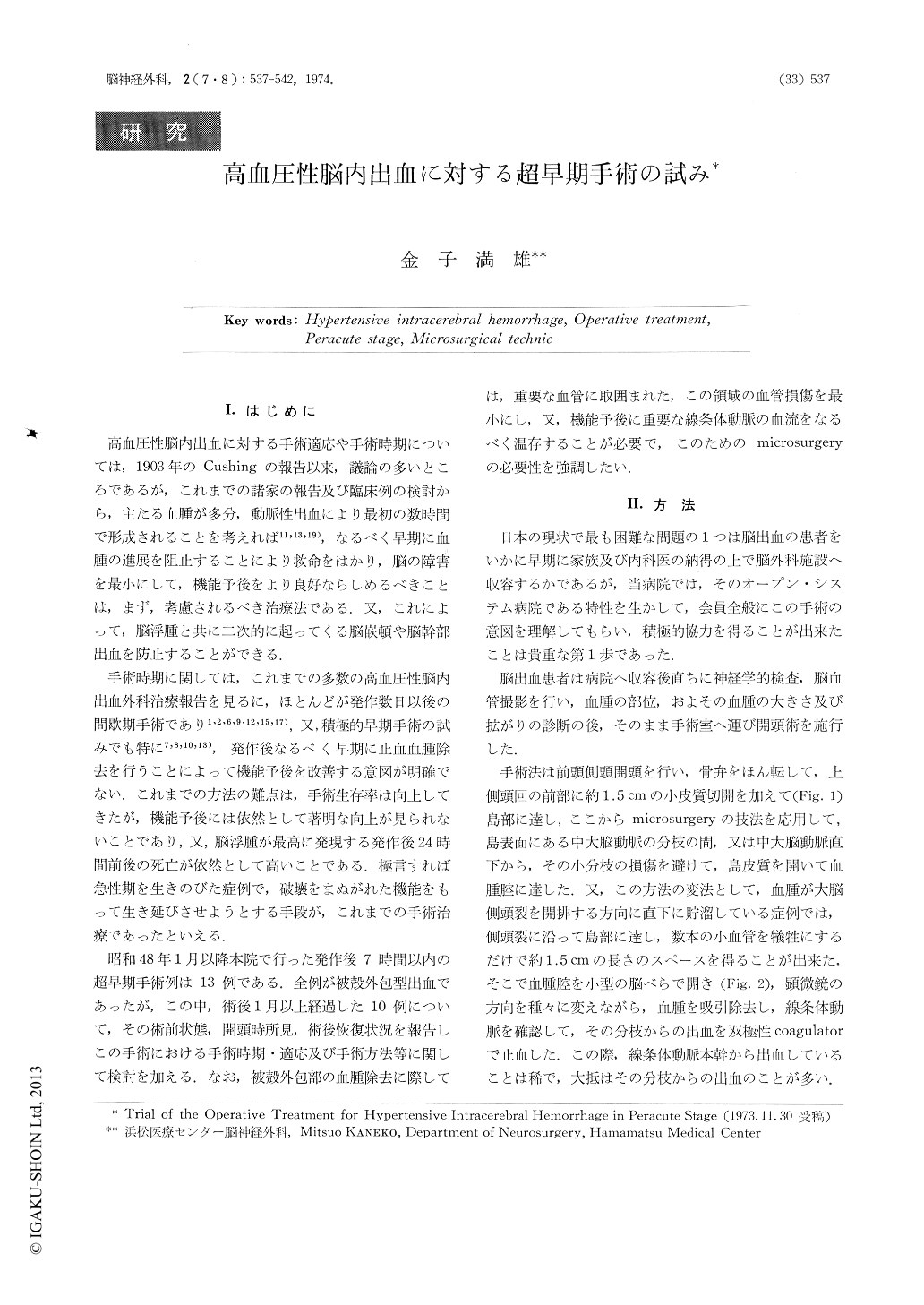Japanese
English
- 有料閲覧
- Abstract 文献概要
- 1ページ目 Look Inside
Ⅰ.はじめに
高血圧性脳内出血に対する手術適応や手術時期については,1903年のCushingの報告以来,議論の多いところであるが,これまでの諸家の報告及び臨床例の検討から,主たる血腫が多分,動脈性出血により最初の数時間で形成されることを老えれば11,13,19),なるべく早期に血腫の進展を阻止することにより救命をはかり,脳の障害を最小にして,機能予後をより良好ならしめるべきことは,まず,考慮されるべき治療法である.又,これによって,脳浮腫と共に二次的に起ってくる脳嵌頓や脳幹部出血を防止することができる.
手術時期に関しては,これまでの多数の高血圧性脳内出血外科治療報告を見るに,ほとんどが発作数日以後の間歇期手術であり1,2,6,9,12,15,17),又,積極的早期手術の試みでも特に7,8,10,13),発作後なるべく早期に止血血腫除去を行うことによって機能予後を改善する意図が明確でない.これまでの方法の難点は,手術生存率は向上してきたが,機能予後には依然として著明な向上が見られないことであり,又,脳浮腫が最高に発現する発作後24時間前後の死亡が依然として高いことである.極言すれば急性期を生きのびた症例で,破壊をまぬがれた機能をもって生き延びさせようとする手段が,これまでの手術治療であったといえる.
Ten cases of the hypertensive intracerebral hemorrhage were operated on in peracute stage or within seven hours after the apoplectic attack. There has been much controversy regarding to the timing of the operation for the hypertensive intracerebral hematoma since 70 years ago and most opinion rocommended the late craniotomy in subacute stage until recently. However, the author believe that it is more helpful for the functional recovery to evacuate the hematoma and to accomplish the hemostasis as early as possible in peracute stage in order to release the brain from the compression.

Copyright © 1974, Igaku-Shoin Ltd. All rights reserved.


